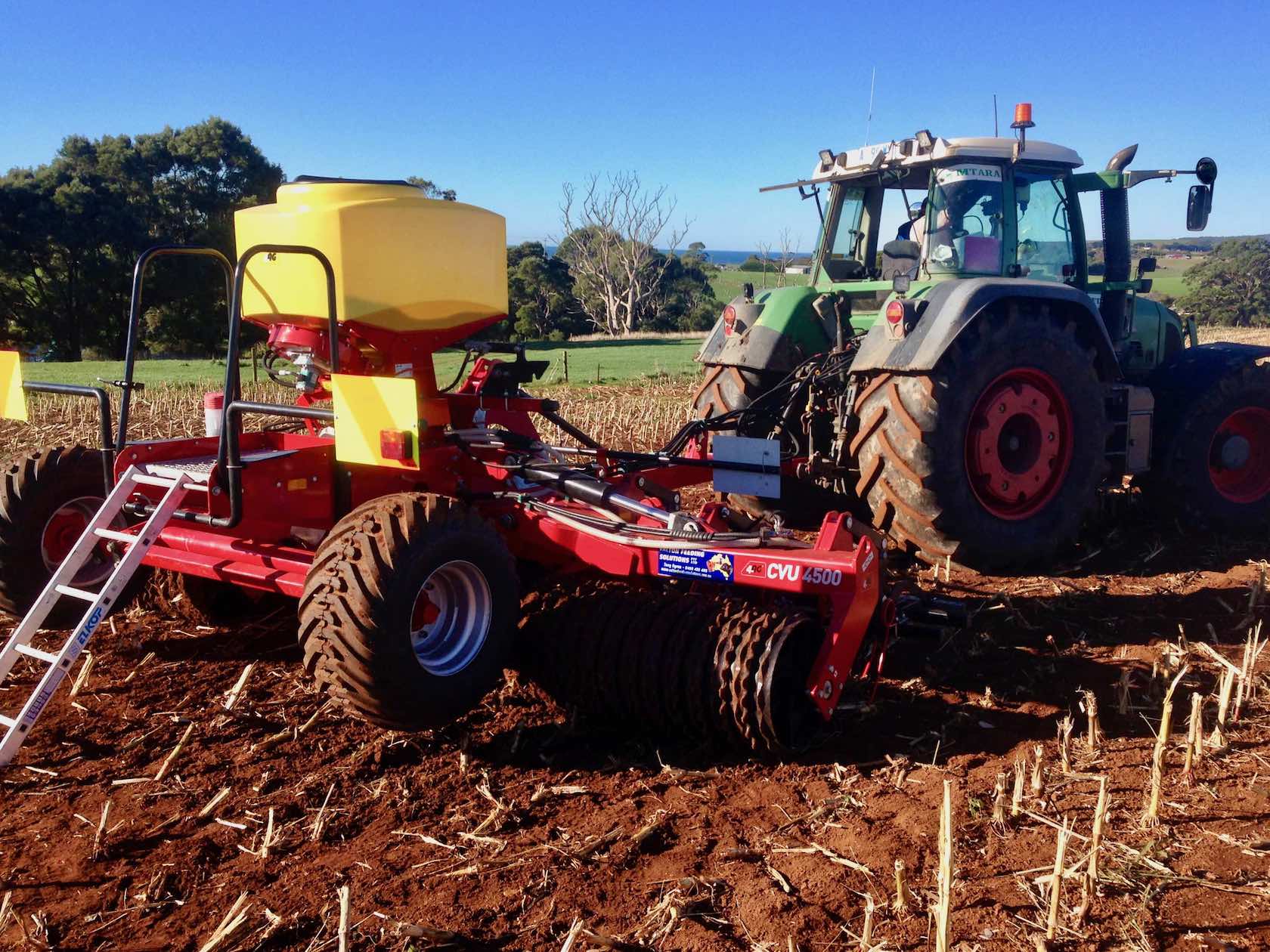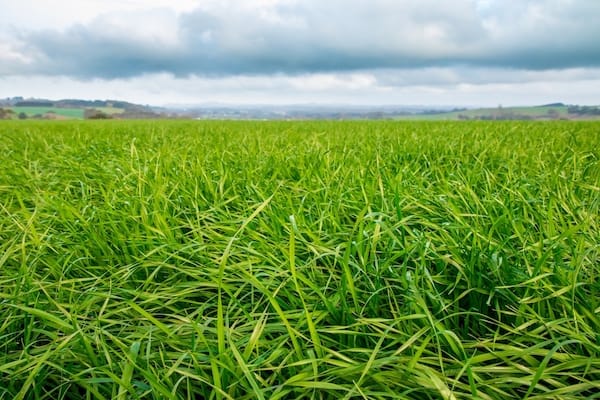Have you ever experienced a time when mowing, fertilising, or even watering your pasture correctly is no longer enough to revive them in the spring?
For sure, you’ve experienced this -- at least once.
That is when it’s the perfect time to do reseeding to keep your pasture in tip-top shape. Let's get into it, so you can start benefitting by renovating your pasture with these 10 important points:
1. What is Reseeding?
2. What are the benefits of Reseeding
3. When is the right time to renovate your pastures?
4. What are some tips for a successful pasture renovation
5. Drainage
6. Fertility
7. Spraying
8. Timing
9. Post Spraying
10. Seedbed

1. What is Reseeding?
During the grazing season, the grass is you cows’ primary source of energy and protein.
During winter, your grass is also the primary source of winter forage in the form of grass silage. Thus, emphasising why you should not treat the low level of reseeding lightly as a big chunk of the profit from your pasture comes from the grass.
But why is reseeding important?
Researches show that old and permanent pasture is up to 25% less responsive and absorptive of nutrients in the soil, such as Nitrogen than new grasses. This reason makes pasture reseeding a definite cost-effective investment for farmers like you.
Through regular reseeding, grass growth capacity will increase substantially, which, of course, gives you a higher profit in your investment too.
Despite this, many farmers do not recognise the economic losses they incur when they continue cultivating underperforming paddocks instead of engaging in reseeding.

2. Benefits of Reseeding
You may argue that reseeding is reserved only for farmers with big farms, especially because of the cost of reseeding, but I don’t think that is the case.
Reseeding has many benefits for farms of all sizes and should be considered a necessary activity for all farmers.
If you are a dairy farmer looking to increase your milk production, reseeding is a low-cost way to do so. By improving the quantity and quality of grass grown in your pasture through reseeding, you are feeding your livestock more nutrient-laden feeds, which allow them to produce nutritious milk of better quality.
Reseeded pasture typically gives 8% more milk output per hectare because of the improved feeding value of the newly-reseeded grass. This increase is a huge benefit for small farmers with fewer pasture areas to move their livestock around.
Reseeding also increases pasture productivity.
Newly renovated pastures grow in the region of 20-40% more grass, a lot of this growth occurring in the spring and autumn.
This increase aids in increasing the number of grazing days on the pasture, which also reduces your need for silage. More so, the silage that comes from renovated paddocks is of far better quality and is easier to preserve. Reseeding is not as costly as you might think.
Another benefit of renovating pastures, which proves that it’s cost-effective is that reseeded grass is more responsive to Nitrogen. This fact means that you will be able to save on your fertiliser expenses on your pasture.
More so, reseeding old pastures helps eliminate old, unproductive paddocks or weed-infested areas in your grass. A combination of these benefits helps ensure increased pasture performance that will also lead to better livestock performance.
All these, of course, result in a higher farm output despite a lower farm input.
3. When is the right time to renovate your pastures?
Reseeding is most commonly done during the growing seasons of spring and autumn because of its advantages when it comes to your feed budget as a farmer.
However, reseeding the pasture for your cattle in autumn also has a few negative consequences. For one, soil conditions deteriorate in autumn. The lower soil temperature during this season can reduce seed germination while varying weather conditions that are potent in autumn can reduce your chances of grazing the pasture.
Aside from this, the ground conditions reduce the opportunity to apply a post-emergence spray for weed growth control during this season as it’s unsuitable for the use of machinery.
Meanwhile, reseeding pasture in spring proved to have benefits that autumn renovation does not present. For one, it gives farmers more flexibility as pastures reseeded in this season will most probably have similar, if not greater, total herbage production during the year than that of old permanent fields.
Because of the stable soil temperature in late spring, reseeding pasture in spring rather than autumn is more reliable. Post-emergence spraying during spring reseeding is also observed to be successful.
But, no matter which of the two seasons you choose to do your reseeding in, take note that it takes around 11 months for your pasture to be fully set in.
Take note too that in the early growth phase, it’s crucial to practice proper grazing management.
4. What are some tips for a successful pasture renovation?
As I’ve already mentioned above, reseeding can deliver excellent returns as long as you follow best practice. For this valuable investment to give you the best results, you should provide a lot of attention to detail and ensure that you offer the young, delicate grass every chance it can to be established.
Before we move on to the tips on specific concerns when it comes to reseeding, first make sure to do this reseeding checklist:
1. Select the paddocks for reseeding. To do this, you may identify paddocks with low perennial ryegrass or paddocks that are poor performing.
2. Do soil sampling and soil testing.
3. Prepare a good seedbed for cultivation.
4. Choose the appropriate grass mixture to reseed.
5. Graze your pasture once the herbage mass reaches 3000-3200 kilograms of dry matter (KgDM/ha).
6. Practice proper grazing management by avoiding overgrazing.
Aside from this checklist, here are a few key areas that you should look out for when reseeding:
5. Drainage
Any issues on drainage should be addressed before investing in reseeding. You should make sure that drains are cleaned. If it requires shores, install them. The subsoil should also be taken away where chips have been used as this subsoil already has very poor fertility and poor drainage characteristics.
Ploughing may also be advantageous in resolving issues with drainage. It can also help level severely damaged fields. However, be careful not to bury the good soil that has high fertility as it may take some years to build back again. Not to mention the adverse impacts that ploughing may have on soil structure - that is a story for another day!
6. Fertility
When renovating pastures, it’s imperative to make sure your soil has ample Nitrogen, Phosphorus, Potassium, and Lime.
You may gauge this by doing soil sampling and testing. As this may take two weeks, make sure to plan your soil testing ahead of time before your planned pasture reseeding.
If you are planning on ploughing, collect your soil sample after turning the ground. But if you insist on not ploughing, using power harrows or disking your soil and are using the min-till method, apply lime to counteract the acid from the old decaying pasture.
You have two options for liming, namely Traditional Quarry Lime, where you base the application rate on your soil test results, and Granlime, which you spread with the use of a fertiliser spreader. The second option is known to work very quickly, but it comes with a price, so best to apply it in smaller quantities. The critical aspect is to use pre-drilling and cultivation for effective use of fertiliser applications the enhance soil fertility.
7. Spraying
Not a section for the organic farmers amongst us.
To make sure that your efforts and investment in reseeding will not go to waste, you must spray off the old pasture. Why? Because your newly reseeded grass, as compared to old grass, is weak and may struggle badly in competing for nutrients with other plants.
You may select any glyphosate products for spraying as they are generally useful, but make sure to check the prices of these products as they may vary a lot depending on the brand.
More so, most of the glyphosate products need around seven or more days to be fully absorbed by the plants.
Once the sprayed grasses are dead, cut them for silage, or graze them.
8. Timing
Again, spring or autumn are the best times to renovate old pastures, but as a general rule, reseeding is better done earlier during these seasons. This reason is because of the post-seeding management needed.
Also, grazing off the old grass and post spraying can pose challenges for you once you enter late September.
9. Post Spraying
Certain species of weeds may pop out after you have sowed your seeds. You should immediately combat unwanted weeds by spraying with the right herbicide.
Ideally, you spray these weeds while the pasture is in its two to three-leaf stage of growth.
Aside from weeds, pests may also pose a threat against your newly seeded grass. You should spray pests such as fruit fly and leather jackets as early as possible using a pesticide that suits your pasture. Another right way to prevent pests is to clean in your area before cultivation and to bury trash when cultivating. Cleaning helps veer away pests as these customarily become a problem when the plant trash remains on the surface.
10. Seedbed
So you may be thinking, “Ploughing or min-till? Which is which?”
The answer to this depends on many factors and not just one. These factors include the capacity and stoniness of the ground, cost, and available equipment.
However, both these two methods can give excellent results, so you should make sure that you are selecting a fine, firm seedbed.
To ensure good soil to seed contact and to preserve the moisture in the ground, after sowing, you may roll the paddock.
By reading to the end of this article – you are now aware of all the benefits of pasture renovation. You're also aware of when reseeding is genuinely needed and how to go about it.
Make sure – once you have completed pasture reseeding, to have an excellent pasture management plan in motion to measure and calculate your new pasture and its growth rate. Why not try our free pasture app? We have a tremendous remote pasture measurement tool for you.
Do you have any other questions, leave a comment below and I'll get back to you asap! If you've had experiences with reseeding let me know as well in the comments below.
Happy farming!
- The Dedicated Team of Pasture.io, 2019-10-16